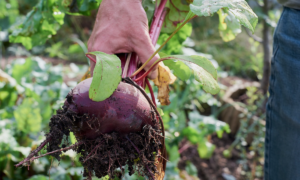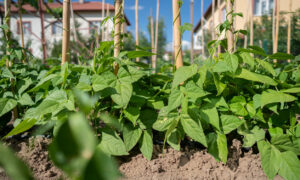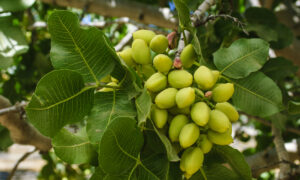We independently research, review, and recommend the best products. If you buy something through our links, we may earn a commission. Learn more.
Have you considered growing courgettes in your greenhouse? If you’re anything like me, and you want to grow fresh courgettes all year round, then it’s worth giving it a try. Greenhouses really are the perfect environment for this summer squash, as they offer protection from pests and diseases, as well as the ability to control temperature and humidity.
Here, we’ll take you through everything you need to know about growing courgettes in a greenhouse, from preparing the greenhouse to planting and caring for your plants, as well as harvesting and storing your courgettes.
Contents
Why should you grow courgettes in a greenhouse?
One of the biggest benefits of growing courgettes in a greenhouse is the extended growing season. Unlike outdoor courgette plants that are limited by the changing seasons, greenhouse-grown courgettes can be planted and harvested all year round. This means you can enjoy fresh courgettes even during the winter months, when they may not be readily available from a greengrocer.
Another advantage of growing courgettes in a greenhouse is the protection it offers from pests and diseases. Greenhouses create a controlled environment that can be monitored and managed to keep invaders at bay. This can greatly reduce the amount of pesticides and other chemicals needed to protect your plants, making your courgettes safer to eat.
Preparing your greenhouse
The first step toward ensuring a healthy and successful crop is preparing your greenhouse for planting. Take it from me, the right greenhouse can make all the difference to the growth and yield of your plants.
The first step in preparing your greenhouse is to select the right one for what you want to achieve. From small hobby greenhouses to large commercial structures, there’s a wide range of greenhouses available. Consider the size of your space, the climate in your area – and, not to mention, your budget – when choosing a greenhouse. A smaller greenhouse may be perfect for a small backyard, while a larger greenhouse may be necessary if you’re considering venturing into a more commercial operation.

Once you’ve selected the greenhouse, it’s important to get it thoroughly cleaned before planting. I always make a point of cleaning all interior and exterior surfaces, as well as removing any debris, weeds, or old plant material from the greenhouse, before I even think about planting. Taking these simple steps will help to prevent the spread of pests and diseases, and ensure a healthy growing environment for your courgettes.
Next, it’s important to ensure that the greenhouse has proper heating, ventilation, and lighting. Greenhouses can trap heat, causing the temperature to become too hot for your plants. Good ventilation is important to control the temperature and humidity inside the greenhouse, and will also help to prevent the buildup of harmful gases and mold. Lighting is also important since courgettes need a lot of light to grow.
Another important aspect of preparing your greenhouse is to ensure that it has a good drainage system. Ensuring that you have sufficient drainage will prevent water from pooling in the greenhouse – something that can cause mold and other issues. Also, be sure to provide enough space between the plants to allow good air circulation.
Lastly, it’s important to consider the layout of the greenhouse. This includes determining where to place the plants, and how to arrange the benches and shelving. This will help to optimize the use of space and make it easy for you to care for your plants.
Planting and care
When it comes to planting courgettes in a greenhouse, timing is key. The best time to plant courgettes in a greenhouse is in late winter or early spring, when the temperature inside the greenhouse is warm enough to support germination and growth. Get the timing right, and the courgettes will be ready to harvest in the summer.
When selecting the variety of courgette to plant in a greenhouse, it is important to consider the size of the plant as well as the size and shape of the fruit. Some varieties, like ‘Black Beauty’ and ‘Caserta’ are well suited to greenhouse cultivation since they’re compact, and produce small to medium size fruits.
Before planting, it is important to prepare the soil. The soil in a greenhouse should be well-draining, rich in organic matter, and have a pH between 6.0 and 7.0. You can add compost or well-rotted manure to the soil to improve its fertility. Make sure to remove any debris or weeds from the soil and rake it smooth before planting.
Courgettes should be planted in mounds, about 2 feet apart, and in rows that are 3-4 feet apart. Planting in mounds helps to ensure good drainage and allows for better air circulation around the plants. When planting, it’s essential to plant the seedlings deep enough so that the base of the stem is buried up to the first set of leaves. This encourages the plant to produce additional roots along the stem, which will make it more stable and able to support the fruit.
After planting, it’s important to provide the plants with proper care and attention. This includes watering the plants regularly, as courgettes require consistent moisture in order to produce fruit. It’s also important to fertilize the plants regularly with a balanced fertilizer, and to monitor the plants for pests and diseases. This can usually be controlled by simply using insecticides or pesticides, or alternatively by using natural pest control methods such as companion planting.
Don’t forget to prune your courgette plants for better yields. As the plants start to grow, pinch out the growing tips to encourage the plant to produce more flowers and fruit. And remove any side shoots that appear between the main stem and the leaf axils.
Harvesting and storage
Take it from me, harvesting courgettes from your greenhouse is a rewarding experience. You’ll be able to enjoy fresh, delicious courgettes that you’ve grown yourself. Honestly, there’s no better taste in the world.
However, it’s important to harvest them at the right time and in the right way to ensure that they are at their best quality. Seasoned growers will tell you that the best time to harvest courgettes is when they’re still small and tender. Courgettes should be harvested when they are 6-8 inches long, and still firm to the touch. Larger courgettes can become tough and bitter, and are best left to mature on the vine for seed production.

When harvesting courgettes, it’s important to use a sharp knife or pair of scissors, and to cut the fruit from the plant cleanly. Twisting or pulling the fruit from the plant can damage the vine and reduce the plant’s ability to produce more fruit.
After you have harvested your courgettes, it’s important to store them properly to keep them fresh. They should be stored in a cool, dry place, such as a refrigerator. They can also be stored in a cool, dark place such as a root cellar. If storing courgettes in the fridge, wrap them in a plastic bag to keep them fresh for a week or more.
Another way to store courgettes is to preserve them. Courgettes can be pickled, frozen, or dried for longer storage. Pickling is a great way to preserve courgettes, and the pickled courgettes can be enjoyed as a side dish or added to sandwiches and salads. Freezing courgettes is also a great way to store them for later use, and they can be thawed and used in a variety of dishes. Drying courgettes is another way to store them for a long time, and they can be rehydrated and used in soups, stews or other dishes.
By following these steps, you’ll be able to harvest and store your courgettes properly, ensuring that they are fresh and delicious when you’re ready to enjoy them.






